President Joe Biden is set to call on all U.S. K-12 schools to set up weekly COVID-19 testing for students, teachers and staff.
It will be one of Biden’s key strategies for combating the Delta variant surge, which will be announced during his speech on Thursday afternoon, according to an NBC report.
The push for testing comes as record numbers of children fall ill with the virus, posing an immense challenge for the schools now reopening for their fall 2021 semester.
However, most pediatric cases are not severe and Covid-related fatalities among children are rare, with pediatric deaths making up just 0.1 percent of all COVID-19 deaths in the U.S.
Many schools are not currently utilizing Covid testing, despite Congress dedicating $10 billion towards this safety strategy in April.
Experts say regular testing can help schools identify cases before they turn into outbreaks and that schools that utilized testing last year were able to keep case numbers down.
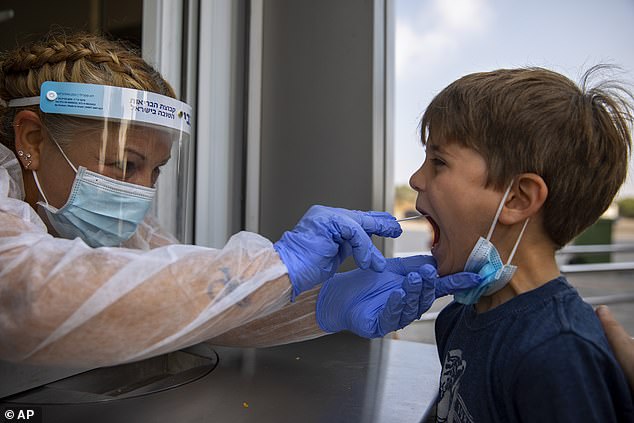
The Biden administration is calling for all K-12 schools to utilize Covid testing in schools. Pictured: A health worker collects a swab sample from a young patient at a center in Tel Aviv, Israel, August 2021
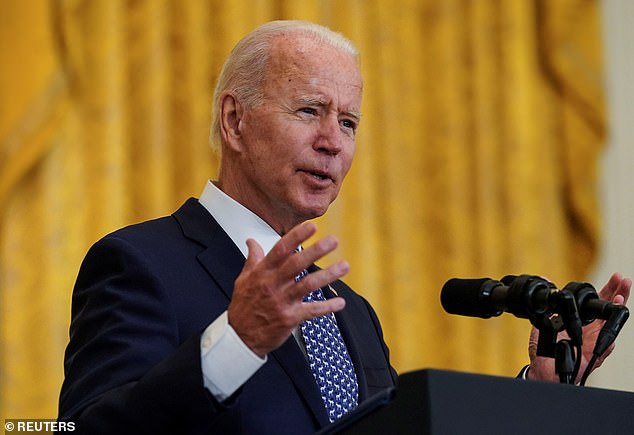
The program will be one of Biden’s six key strategies for combatting the current Covid surge and will be announced at his speech on Thursday afternoon. Pictured: Biden delivers remarks in honor of labor unions in the East Room at the White House, Wednesday
Biden is set to make a big announcement Thursday afternoon, revealing a six-point plan to address the ongoing pandemic surge.
One of the points in his plan will be school testing.
‘The administration is calling on all schools to set up regular testing in their schools for students, teachers, and staff consistent with CDC guidance,’ an official told NBC.
The announcement comes as more children are getting infected with the coronavirus across the country.
More than 250,000 cases in children have been reported in the past week alone, which is the highest total since the pandemic began and 25 percent higher than the previous week.
However, low numbers of children who catch Covid are hospitalized or die – with pediatric deaths comprising only 0.1 percent of all Covid deaths in the country.
In many schools, one infected child triggers quarantines for an entire classroom, and high case numbers can lead to kids missing out on valuable in-person learning for weeks on end.
Public health experts say Covid testing is a crucial strategy for keeping case numbers down in schools – in fact, it worked in many schools during the previous school year.
In these schools, a specified percentage of students, teachers and staff were randomly selected for Covid testing at a designated interval such as once per week.
Through this regular testing, school leaders can identify cases in people who may be asymptomatic and not showing any symptoms.
Schools may use highly-accurate PCR tests, less-accurate but rapid antigen tests, or other methods.
In Delaware, for example, antigen tests were available to all school districts in spring 2021.
The districts that utilized these tests for regular screenings said that they were able to catch asymptomatic cases and isolate those students before they infected others.
Other schools, such as those in Baltimore, Maryland, have utilized pooled testing – a method in which swab samples from an entire classroom are combined and PCR-tested together.
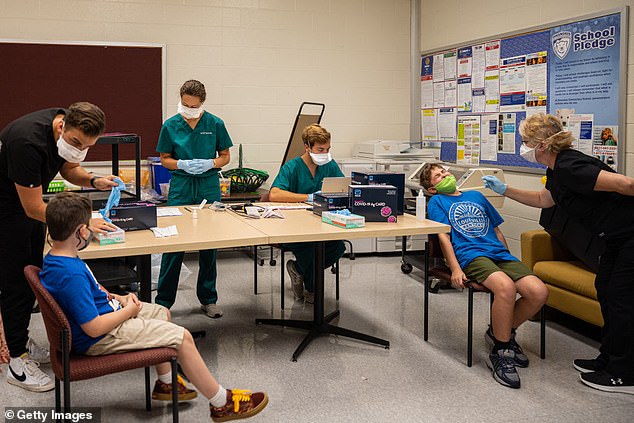
Districts that used regular testing last year said the strategy helped them catch asymptomatic cases. Pictured: Two students get tested during a Covid testing day at Brandeis Elementary School in Louisville, Kentucky, August 2021
If the entire classroom is negative, school administrators will get that result in under 24 hours and class may continue as normal.
If the pooled test shows a positive result, the class can quarantine while protecting the privacy of the individual who got infected.
Frequent Covid testing has also been a common strategy at colleges and universities to help campuses stay open.
For instance, the University of Illinois developed a proprietary saliva test – to come on campus, students needed to get tested two or three times a week.
This test identified asymptomatic students and campus hotspots, allowing administrators to quickly get outbreaks under control.
Seeing early successes from some schools, Congress devoted $10 billion to K-12 school testing as part of the American Rescue Plan, passed in April 2021.
Despite this influx of funding, however, most schools aren’t doing regular testing – or are testing at a limited capacity, not following guidance from the Centers for Disease Control and Prevention (CDC).
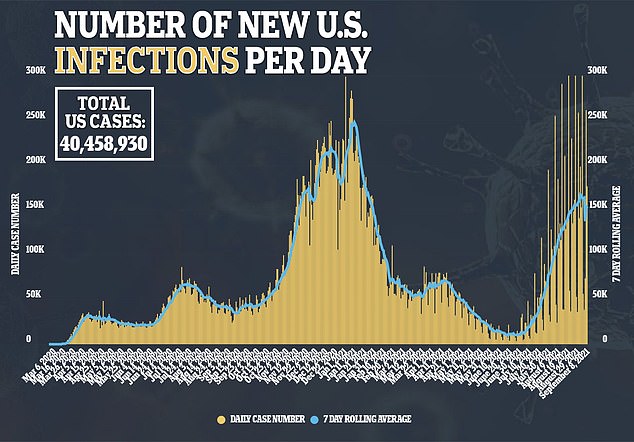
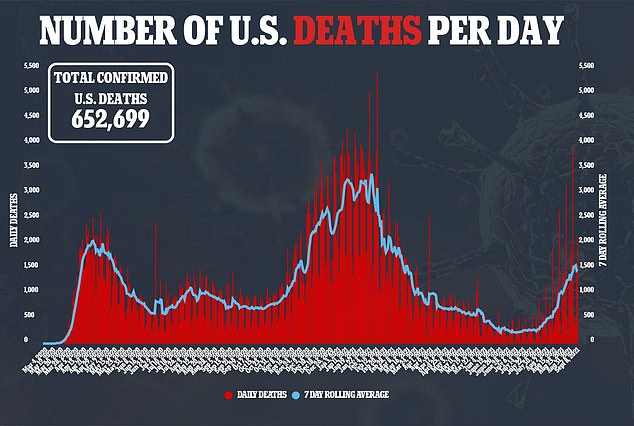
The CDC recommends that schools test ‘a random sample of at least 10 percent of students who are not fully vaccinated’ once a week.
Unvaccinated staff and older students may be tested more frequently, the CDC says.
In many schools, however, tests are only available to staff or only to students who have already demonstrated Covid symptoms.
Children tend to have milder cases or show no symptoms at all – so testing only those with symptoms tends to miss cases.
New York City was a testing success story last school year. The city required all buildings open for in-person instruction to test 20 percent of students and staff once a week.
NYC’s public schools consistently had a lower test positivity rate than the city overall, indicating that the testing protocol helped avoid outbreaks.
This fall, however, the city is slated to test only 10 percent of unvaccinated students at a lower frequency – once every two weeks – and allows students to opt out of the program.
The new plan has drawn criticism from parents who say the city ‘should be increasing testing, not reducing it.’
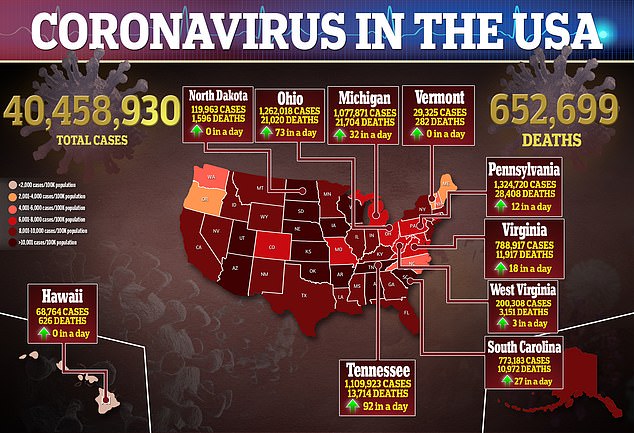
Source link : https://www.dailymail.co.uk/health/article-9974367/Biden-administration-call-school-set-regular-COVID-19-testing.html











